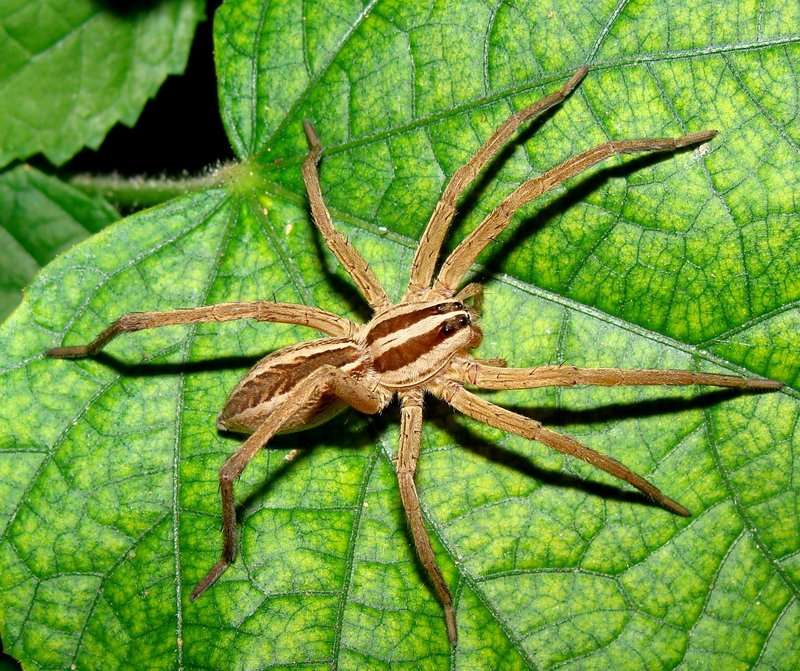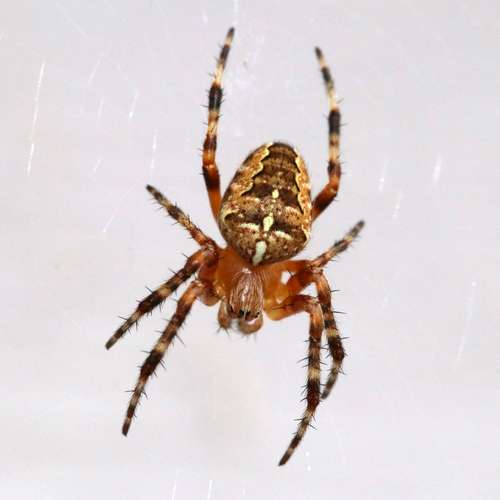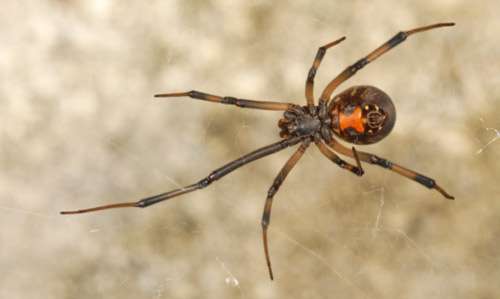
The rabid wolf spider, also known as Rabidosa rabida, is a species of spider that is indigenous to North America and belongs to the Lycosidae family. It can be found in the United States from Maine to Florida and farther west to Texas.
Geographical Distribution
The rabidosa rabida is highly widespread and common. It is frequently described as a roving spider. Typically, it can be found from eastern Nebraska up through central Texas and Oklahoma. It has regularly been located in Florida and as far east as Maine.
Description of the body
- The cephalothorax of a typical rabid wolf spider is dark gray with two light longitudinal stripes spanning the top and a thin light line on either lateral margin of the thorax.
- The abdomen bears many pairs of light dots on the back and a black median stripe that is notched on either side in front of the midline of the abdomen.
- While the other legs are brown, the first pair is frequently black or a dark brown color.
- Males are normally significantly smaller than females, measuring an average of 13 millimetres in length, while females typically range in length from 16 to 21 millimetres.

Habitat
Buildings, cotton fields, and wooded areas are where Rabidosa rabida is most frequently found. These spiders typically live in these regions among trash, litter, holes, under rocks, and on low vegetation. Some people have been discovered around ponds or in caverns with a mound of rubble.
Feeding Habits
Normally, rabid wolf spiders favor eating little insects and other invertebrates. Crickets, locusts, ants, grasshoppers, and even other spiders have all been known to be consumed by them. R. rabida is quite resilient and typically unafraid of larger organisms. These spiders hunt by “sitting and waiting.” R. rabida must remain stationary in order to more quickly recognize visual and vibratory cues from prey. Since these spiders do not consume solid food, once they have an insect in their grasp, they typically suck out the juices and nutrients.
Lifespan
The majority of rabid wolf spiders have a lifespan of up to two years, sometimes with six months spent on the mother’s back. The larger, fitter R. rabida can survive in stable conditions for longer than two years.
Importance
Role in Ecosystem
The environment only has a small place for Rabidosa rabida. Its primary role as a predator is to keep the increasing insect population under control. However, as a species that occasionally preys, it might potentially help feed other organisms.
Positive Role in Human Life
- rabida is widespread in semi-urban and rural settings and is quite active in its insect predation, although providing little direct benefit to humans. Where pests are an issue, this can be quite advantageous.
Negative Role in Human Life
Besides being pests, Rabidosa rabida rarely cause harm to people. Despite not being venomous, these spiders have been known to attack unwary people.
Keeping as Pet
Rabid wolf spiders can be kept as pets because, when treated properly, they are often docile and harmless. Their care needs are anticipated to be comparable to those of other wolf spider species. It is recommended to maintain these spiders in an aquarium or terrarium with good ventilation because they don’t spin webs. Insects will be their only source of food. Despite the fact that these spiders are not harmful by nature, it is still best to avoid handling them or removing them from their enclosure too frequently because their bites hurt.
Table





